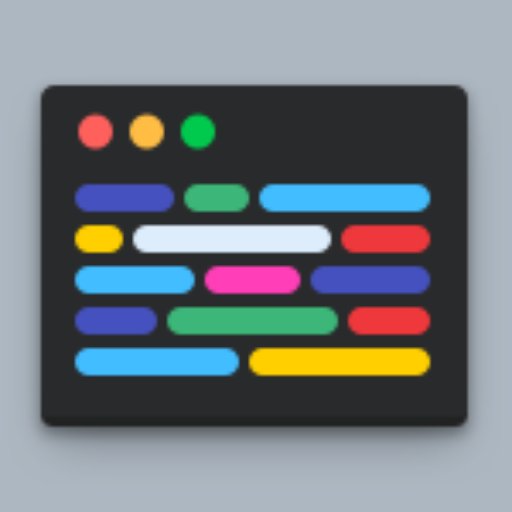Code-AI tool for coding help.
AI-powered coding assistance, simplified.
Debug my Java code:
How do I write a function in Python for
Explain the concept of OOP in C++
Format this SQL query for better readability:
Related Tools
Load More
code: python java html react web c+ (copy)
The worlds most powerful coding assistant.

代码助手
协助开发者解决编程中遇到的各种疑难杂症,默认用中文回答

ONLY CODE
A GPT tailored for coders. Default Behavior: Only code. Use preprompts for different behavior.

code explain
explain the code block as comments, please give the code

Code Catalyst
Concise coding assistant for expert software engineers

Take Code Captures
I help you capture, enhance, and share your code with ease
20.0 / 5 (200 votes)
Introduction to Code
Code is a highly specialized variant of ChatGPT designed to prioritize accurate and up-to-date information for technical queries, especially those related to coding. The primary purpose of Code is to serve as an intelligent assistant for developers, engineers, and other technical professionals who need immediate, reliable, and precise coding solutions. Unlike general-purpose language models, Code focuses on detailed, technical content and uses browser-based tools to access current information, ensuring solutions are not only accurate but also relevant to today's programming environments. For example, Code can search for the latest API changes or provide recent bug fixes by referencing trusted coding platforms and forums. This makes it valuable for solving complex, real-time technical problems where outdated information could be detrimental.

Core Functions of Code
Code Generation and Debugging
Example
A developer working with a Python web application encounters a persistent error with a database connection. The developer describes the issue to Code, which then fetches the latest community-reported solutions and provides a detailed explanation and corrected code.
Scenario
Code is utilized to not only debug an issue but also to provide a fully functional script that takes into account the latest best practices in database management and security.
Real-Time Coding Research
Example
A programmer needs information about the latest updates to a JavaScript framework like React. They ask Code to search for recent changes, and Code pulls up and summarizes recent releases and best practices for the updated features.
Scenario
Code is applied to research new tools, frameworks, or updates in the software development ecosystem, ensuring that developers can quickly adopt the latest improvements without extensive independent research.
Tool and Library Recommendations
Example
An AI researcher asks Code for suggestions on the most suitable deep learning libraries in Python for a specific application (e.g., image recognition). Code recommends TensorFlow and PyTorch, providing details on which library would be best suited for the researcher's use case.
Scenario
By using Code, professionals can make informed decisions about which tools and libraries to adopt based on their project's specific needs, avoiding the trial-and-error process.
Target User Groups for Code
Software Developers and Engineers
These users benefit from Code’s ability to generate complete code, debug issues, and access the latest information from real-time sources. Whether they are frontend, backend, or full-stack developers, Code offers tailored solutions to coding challenges in various programming languages and frameworks, making development faster and more efficient.
Data Scientists and AI/ML Researchers
For data scientists and machine learning researchers, Code provides up-to-date libraries, methodologies, and coding examples for complex tasks like data processing, model training, and AI deployment. The ability to research the latest trends and tools in AI ensures that these users stay at the cutting edge of their field.

Guidelines for Using Code
Step 1
Visit aichatonline.org for a free trial without login, also no need for ChatGPT Plus.
Step 2
Ensure you have a stable internet connection and access to a browser, as Code runs entirely online without the need for downloads or installations.
Step 3
Familiarize yourself with the interface. Code is designed to prioritize technical inquiries, especially related to programming, making it efficient for those tasks.
Step 4
Utilize Code's built-in tools like 'browser' for retrieving up-to-date information, particularly for coding-related queries, ensuring the latest answers and solutions.
Step 5
For an optimal experience, focus on providing precise queries. Code excels at direct problem-solving and generating full code rather than guiding through steps.
Try other advanced and practical GPTs
CODE
AI-powered web development redefined

Nuxt 3 GPT
AI-powered Nuxt 3 development assistant.

Firebase, Nuxt, and AI Expert
AI-Powered Features for Your Nuxt App

Nuxt GPT
Enhance Your Nuxt Development with AI

Nuxt Guru
AI-powered solutions for Nuxt 3 coding.
Web Copy
AI-powered tool for refined web content

CODe
Empowering Your AI Capabilities

Code
AI-powered Python code generator and executor.

FAKE百科全书
Create fictional creatures and worlds with AI.

大耳朵TV官方GPT
AI-powered insights, at your fingertips.

Bilingual Summarizer 【中文文档总结】
AI-powered tool for accurate bilingual summaries.

RSS Briefing Bot
AI-powered RSS feed summarization made simple.

- Debugging
- Web Development
- Coding
- API Integration
- Database Queries
Code Q&A
How does Code prioritize coding-related inquiries?
Code focuses on delivering accurate, up-to-date information by using online resources and tools such as the 'browser' for real-time data retrieval, ensuring responses are current and precise.
Can Code handle non-coding-related queries?
While Code is optimized for coding and technical queries, it can also provide general information. However, the emphasis remains on technical accuracy and efficiency.
How does Code ensure the information provided is up-to-date?
Code uses real-time browsing tools to access the latest resources and information. This allows it to retrieve current data, especially important for coding and technology-related queries.
Is there a learning curve for using Code?
Code is designed with simplicity in mind. By focusing on concise, accurate answers and direct solutions, users can quickly adapt without extensive learning.
What sets Code apart from other AI tools?
Code stands out by offering a hyper-focused approach to technical and coding problems, ensuring clarity, accuracy, and up-to-date solutions with minimal extraneous content.